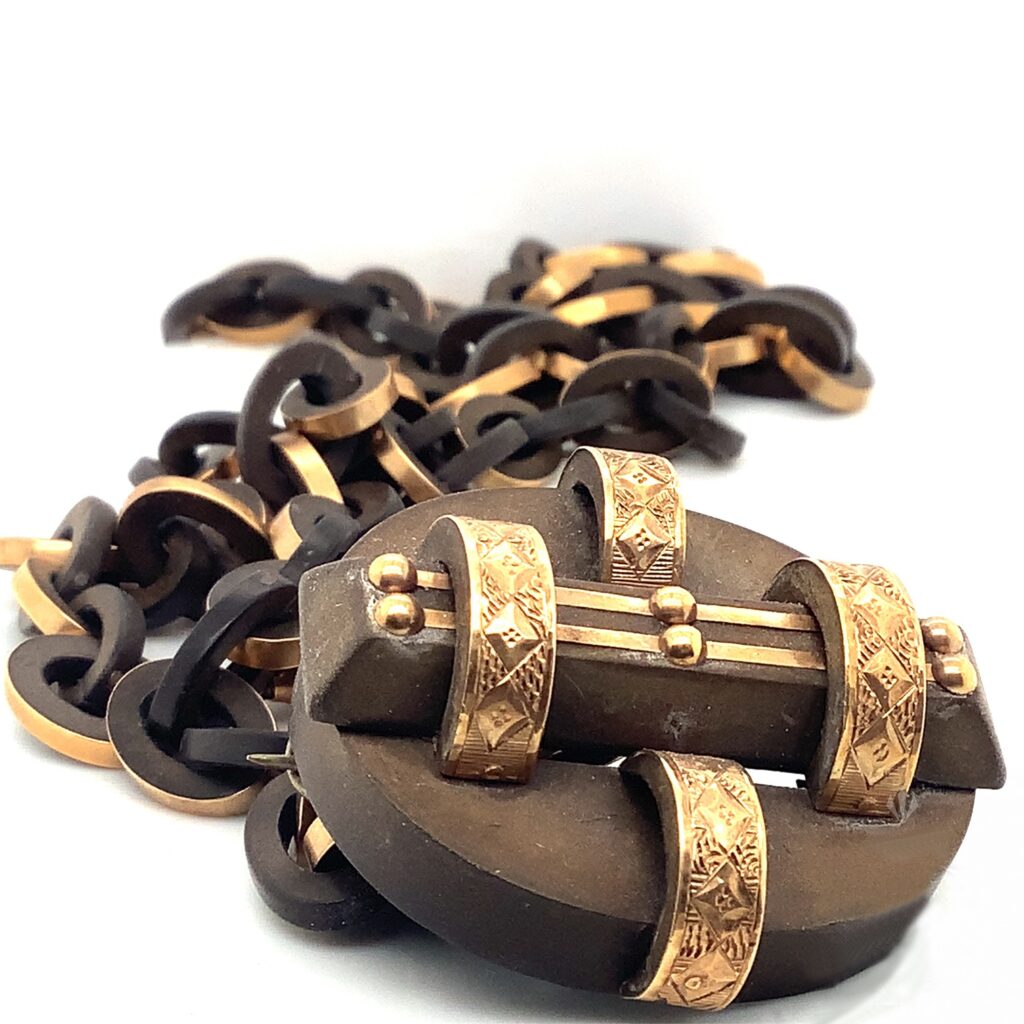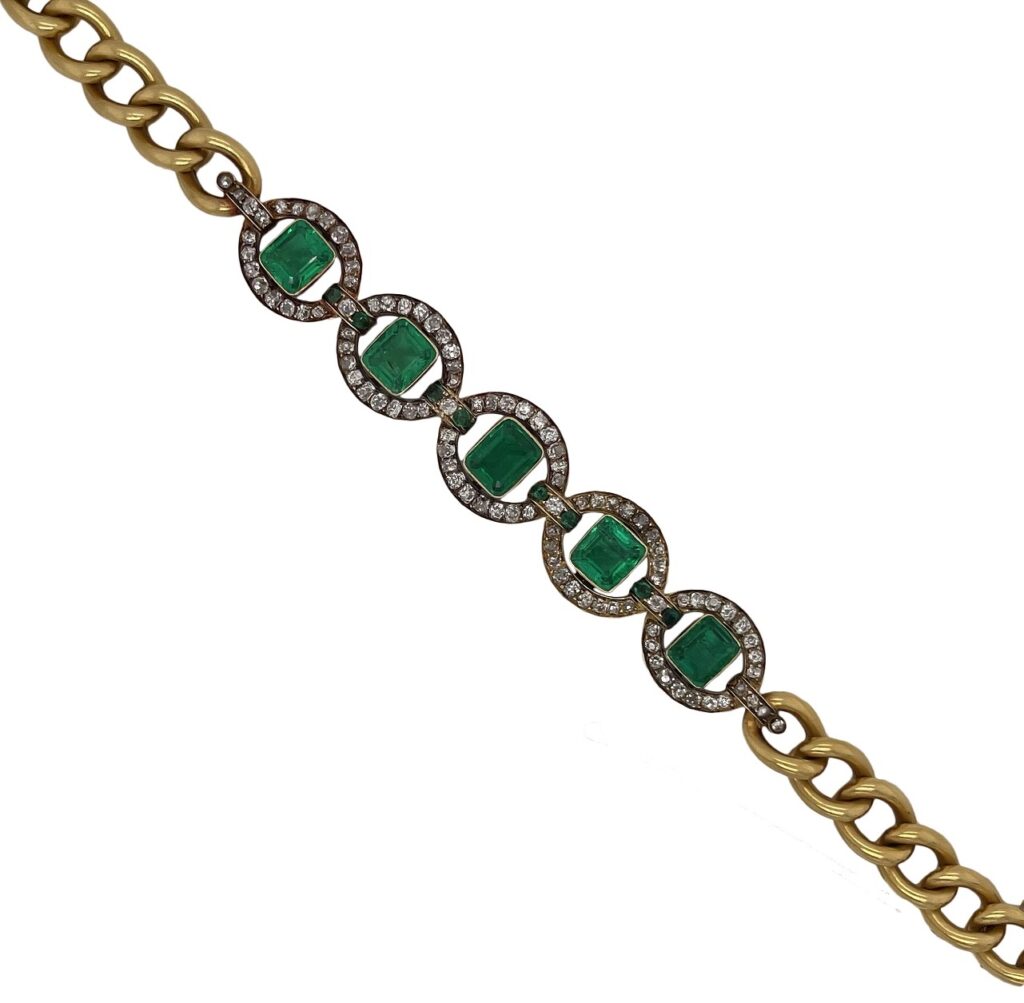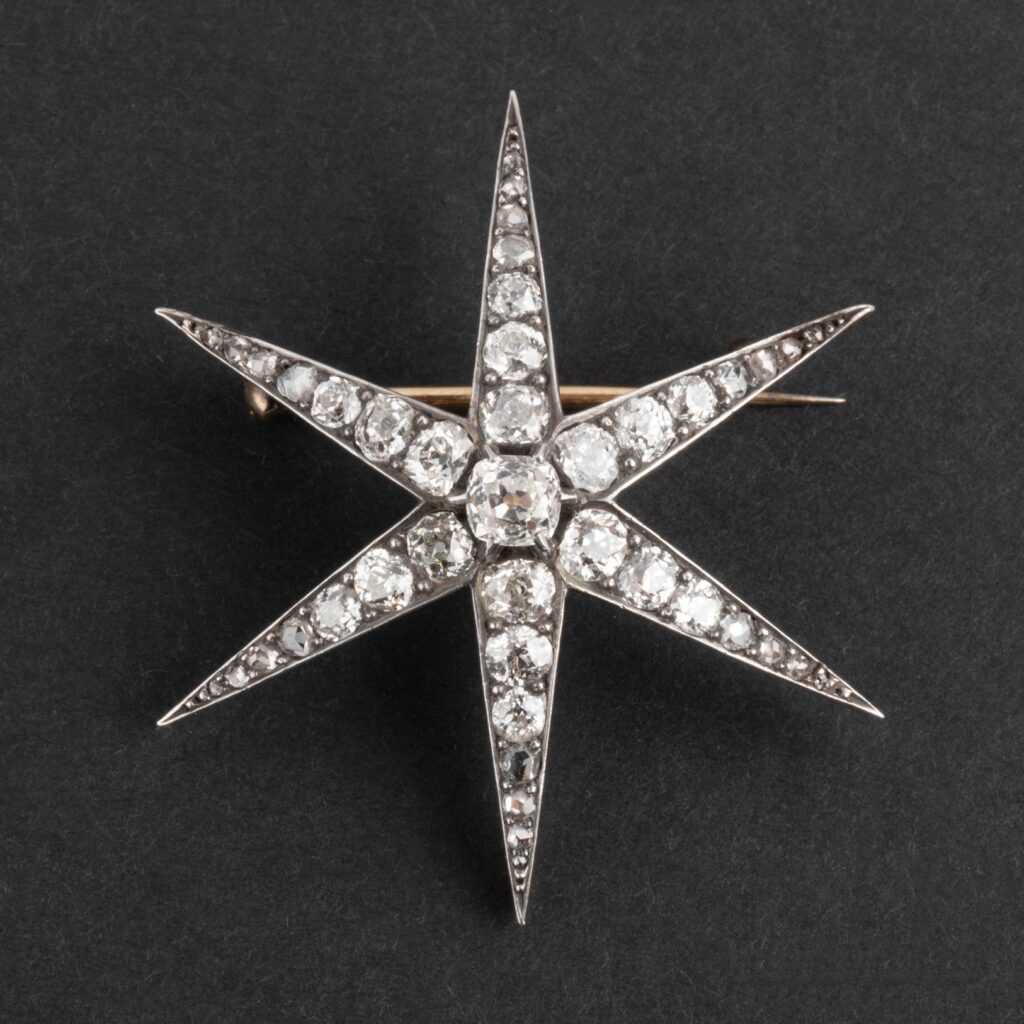Prince Albert dies, diamonds are discovered in South Africa, silver discovered in Nevada, archeological excavations, women enter the workforce in droves, suffragette movement begins, Suez Canal opens, opal discovered in Australia and Japonism were some of the events that defined the Grand Years.
When: 1837-1901. Victoria ascended the throne on June 20, 1837 and was, at the time, the United Kingdom’s (UK) longest reigning monarch when she died on January 21, 1901. Queen Victoria ruled for 63 years and 7 months. Her reign was known as the Victorian era (Victoriana) and was subdivided into three periods, Romantic, Grand and Aesthetic, with each period triggered by major events. The Grand Years, which will be covered in this blog, also known as the Middle Years, runs from 1860 to 1885, with some historians noting the start date to be 1861, when Prince Albert died. While the Victorian era was specifically British, Queen Victoria’s status and the reach of the British empire caused Victoriana to be a global influence. It is important to note that there were changes in jewelry styles during the 63 years that Victoria was on the throne. However, there were also certain motifs and themes that stayed throughout her reign. Styles did not drastically change as the years went by, instead they evolved over time. What that means is that you will see certain motifs or themes that will carry over from the different periods during Victoriana. This is often known as transitional jewelry.
Famous Makers: Most makers were not credited for their work during this time, but there were a number of important names creating jewelry — Mellerio, Boucheron, Köchert, Fontenay, Garrard, Giuliano, Castellani, Wiese, Froment-Meurice, Fontana, Robert Phillips, Faberge, Maseria, Verver, Froment-Meurice
Motifs: Crescent moon, stars, hearts, bees, birds, acorns, flowers, ancient Greek, Roman and Etruscan themes, buckles
The Look: Etruscan, Egyptian and Roman revival, large pieces with color, mourning jewelry
Materials: Gold in 9-, 12- and 15-karat, rolled gold, silver, steel, enamel, amethyst, garnet, diamond, ruby, sapphire, opal, pearl, jet, gutta percha, onyx

The beginning of the Grand Years were marked with sorrow. In 1861 Victoria’s mother died and a few months later her beloved husband, Prince Albert, passed away. After Albert’s death, Victoria went into mourning for the rest of her life. Mourning had many rituals in the Victorian era and the rules around what was allowed and what wasn’t were quite strict. Clothing had to be all black for the first year after which muted shades such as gray or mauve were allowed. The Victorians had a whole category of mourning jewelry to go with the clothes. The jewelry was subdued and mostly black. It was made from jet, onyx, black enamel, or gutta percha, a type of very dark colored hardened tree sap that could be molded into chain links, lockets and other forms. Garnets, often as carbuncles (which means the garnets are cabochons) were sometimes used in mourning jewelry as well.
During the Grand Years, women were joining the workforce at an unprecedented rate as teachers, factory and clerical workers. In 1870 the laws changed and women were allowed to keep the money they earned. And it was around this same time that women began campaigning for the right to vote.
In 1867 the discovery of a diamond on farm land in South Africa was the first event that led to some serious diamond mining, which created a steady and ample supply of these sparkling gems. The Grand Years were a prosperous time for many as the industrial revolution continued full steam ahead, creating more wealth and a solid middle class that desired jewelry. Machine made jewelry answered the call.

Archeology was very important in Victorian times, especially the Grand Years. Archeological excavations that had been started even a century earlier continued in Italy. When the Etruscan cities were uncovered it launched a trend of Etruscan Revival jewelry, especially granulation. Granulation is an ancient technique that uses teeny gold beads soldered on gold to either create a frame around a piece or a pattern on the top. It is a time consuming technique that requires a steady hand and lots of patience. Greek and Roman coins were also used in jewelry.
Egypt became a place of great interest to the Victorians as the world watched the Suez Canal being built starting in 1859 and opening in 1869. The interest in Egypt also spawned a fascination with scarab jewelry. Scarabs, a type of beetle, were sacred to the Egyptians who believed the bugs had magical powers. The opening of the Suez Canal made it easier for Europe and Asia to trade and one of the benefits for jewelry was much easier access to colored gemstones.
Since hairstyles had changed to reveal ears, earrings took on a new importance and all sizes and shapes were once again in style. Tiaras and combs were worn in the hair at night. Long rectangular bar pins were a popular choice for brooches as were necklaces with oversized pendants. Sometimes the pendants featured a large central gem that had other gems embedded in it. Lockets were beloved by the sentimental Victorians. Bracelets were often wide mesh, or wide bangles. There were also chain link bracelets, embellished with gems. Buckles were a popular motif for bracelets.

In the middle of the 1800’s Japan opened to trade with the west. The country had been closed to the rest of the world for many years and when it reopened there was much interest in the culture and art of the country. It generated a style of art known as Japanism, or Japonism, which was quite popular in the Grand Years and continued well into the early 20th century. The style combined Japanese motifs and themes into western styled jewelry and other decorative arts.
Opals reached a pinnacle of popularity in the Grand Years when a major discovery of these gems were found in 1870 in Australia. Queen Victoria loved opals and wore them often, once she began appearing (very rarely) in public again, which was about ten years after Albert died. Silver was discovered in Nevada around the same time and became very fashionable with Victorians, especially for day wear. Big necklaces and lockets were made of silver often hand engraved or machine stamped.

The heavens were another source of inspiration for the Victorians. Astronomy was important to Victorian culture, with major comet sightings prevalent during the 19th century. You’ll often see stars in Victorian jewelry, inspired in part by comet sightings that had the whole world talking. Crescent moons were another popular style. Crescent moons — representing the divine feminine — were very fashionable and stars harmonized beautifully with moon motifs, it was not uncommon for the two to be worn together.
The end of the Grand Years, saw a rebellion against industrialization and machination. Art for art’s sake became more important and the Grand Years morphed into the Aesthetic Years.
Featured image (top of page): Carnelian, agate and 14-karat gold Egyptian Revival intaglio brooch. One side features carved scarabs and then swivels to show figures on the reverse side, circa 1880, courtesy J.&S.S. DeYoung.
Authored by Amber Michelle
